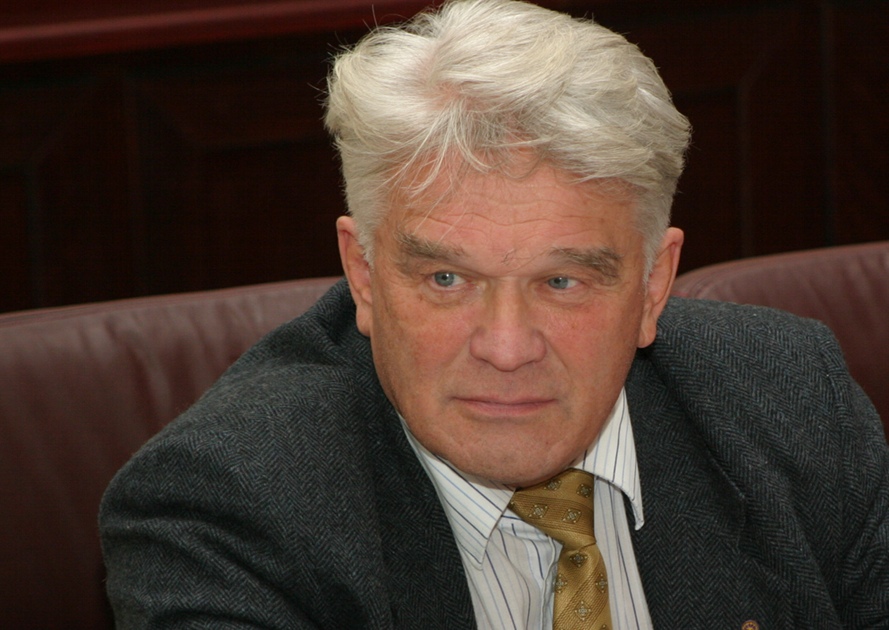Autobiography
I was born on March 10, 1934 in Leningrad (now St.Petersburg), where I have resided for most of my life. The exception was during the war from the middle of 1941 till the beginning of 1945, when I was evacuated from Leningrad and lived in several places in the East, mostly in Kazan.
Both my parents were mathematicians. My father's interests were very wide, but he considered himself an algebraist. It is acknowledged now, that he was an independent creator of the homological algebra. My mother worked on applied problems; her most known contributions are to the computational methods of linear algebra.
In high school I had many different interests including photography, radio modelling and cross-country skiing. I was good at mathematics in class, but was not an "Olympiad boy". I decided to get higher education at the Department of Physics of Leningrad University to be independent of my father, who was Professor at the Department of Mathematics.
However, mathematics caught me there. Due to the influence of academicians V. A. Fock and V. I. Smirnov the mathematical education of students of the Department of Physics was excellently organized. My tutor from the third year of undergraduate studies was Professor O. A. Ladyzhenskaya, a renowned specialist in PDE. She did not push me into this field of classical mathematical physics. Rather, she proposed me as an additional reading papers on the quantum scattering problem. The first was a paper of N. Levinson on the uniqueness in the reconstruction of potential in the radial Schroedinger operator from the phase shift. Also, I was to read and relate on the special seminar the book of K. O. Friedrichs "Mathematical Aspects of Quantum Field Theory". Of course I came through all traditional courses in Theoretical Physics. So I was very lucky to get an excellent education both in Theoretical Physics and Mathematics which defined my future career as a mathematical physicist with prime interest in quantum theory.
I finished my undergraduate studies in 1956 and graduated with the degree of Candidate of Sciences in 1959. During this time I was happy to marry Anna Veselova. We have two daughters and four grandchildren, already quite adult.
My first scientific paper was published in 1956, so I have been involved in active scientific work for more than 50 years. I began by treating the mathematical questions of the quantum scattering theory, both direct and inverse problems. The treatment of the quantum scattering theory for the system of three particles, based on the integral equations, now bearing my name, brought me my first success. The work was highly appreciated by the specialists in nuclear physics. The attention of mathematicians came later and now the theory of many body quantum scattering is an active subject of modern mathematical physics. However, personally I estimate higher my solution of the overdetermined many dimensional inverse problem for the Schroedinger operator with local potential. Recently, I have heard that this work gets practical applications in tomography.
The first success and defence of the Doctor of Science dissertation in 1963 allowed me to turn to Quantum Field Theory – my dream of younger years. At that time the QFT was practically forbidden in the Soviet Union because of the (pure scientific) censorship of Landau. Fortunately, living in Leningrad I was outside the scope of Moscow influence and was free to do what I wanted. After reading the Polish lecture of R. Feynman and the book by A. Lichnerowitz on the theory of connections, I decided to work on the problem of quantization of the Yang-Mills field. In the fall of 1966, in collaboration with a bright young colleague, Victor Popov, I came to the proper formulation of this theory in terms of the functional integral. We calculated the formal measure, on the manifold of the gauge equivalent classes of connections. Later it was said that we overplayed Feynman in his field. Our short paper, published in 1967, became popular only several years later, when the Yang-Mills field was incorporated into the unified theory of Electromagnetic and Weak Interactions by S. Weinberg, A. Salam.
In 1970 I was introduced by V. Zakharov to the inverse scattering method of solving the nonlinear evolution equation on two dimensional space-time. Our first joint result – the Hamiltonian interpretation and complete integrability of the Korteveg - de Vries equation – defined my activity for 20 years. The main achievements here, made together with a large group of excellent students (now called "Leningrad School"), are the unravelling of the algebraic structure of quantum integrable models (the Yang-Baxter equation) and formulation of the Algebraic Bethe Ansatz. This development eventually became a base of construction of quantum groups by V. Drinfeld.
It is quite invigorating for me to watch how this formalism was resurrected in the modern treatment the Yang-Mills theory.
In later years I also returned to the Yang-Mills theory, however without connection with integrability. Together with my colleague, A. Niemi, I try to find an adequate picture for the particle-live excitations in this theory. We envision a possible knot-like soliton structure for them. However, the work is in its preliminary stage.
At present I live quite comfortably in St. Petersburg. I enjoy
contacts with my former students, living in Europe and the USA, and hope to
recruit new ones from the generation more than 50 years younger than me.
9 September 2008, Hong Kong
